- Home
- About Us
- Contact Us
- Site Map
- Affiliate Disclosure
- Privacy Policy
- Terms And Conditions
- Best Drone For Beginners 2021 : Top Beginner Drones
- Best Drones 2022 For Beginners : Top Beginner Drone
- Best Drones For Under 100 Dollars That Are Top Easy To Fly
- Best Cheap Drone For Photography : Camera Drones Budget
- What Is The Best Drone For 2022 And How Fast They Go
- Best Drone In The World To Use For Your First Time
- Best Drones 2022 With Camera : Which One Is The Best Drone
- Mavic Drone : The Most Marvelous Epic Controlled Flight System
- Drone Pilot License : The Best Way To Show Off Your Flight Skill
- Sky Rider Drone: Wi-fi Quadcopter With Foldable Black Camera
- Drone For Kids : The Best Toy To Focus On STEM Technology
- Propel Drone HD Camera Quadcopter And Star Wars
- Mini Drone With Camera : What Is The Best One And Why It Is Good
- Drones Dji : The Most Popular Consumer Drone On The Market Today
- Long Range Drone : How Far Can It Go And At What Rate Of Speed
- Micro Drone : The Smallest Toy With The Biggest Flight Fun
- Flying Spinner Mini Drone : The Best Flying Machine For Home Use
- Drones That Follow You : Is This An Invasion of Privacy or Not ?
- Drone Vivitar : A Magnificent Piece Of Equipment To Learn To Fly
- Drone Repair Near Me : Where Can I Find Reliable Parts And Stuff
- Drone Photography Near Me That Can Capture The Scenic View
- Drone Quadcopter : The Best Aerial Fly Machine That You Can Own
- Drone Light Show : A Spectacular Array Of Lights, Camera, Action
- Drone Holy Stone : The Most Quality Flying Device Anyone Can Use
- Sky Quad Drone Reviews Is It A Scam Or Legit Revealed
- Drone Fishing : When A Man Has A Rod, Boat, And Nothing But Time
- Faa Drone Registration : Feel Free To Fly But Follow The Rules
- Remote Control Drone : RC Drones With Fpv Controllers
- Hand Controlled Drone : Guiding Your Flight At Your Finger Tips
- Best Video Drones For Beginners | Features A Beginner Drone
- The Best Drone To Buy : Drones 2023 For Beginners
- Dgi Drone
- Best Drone For Night Photography
- Best Drone For The Money
- Best Drone For Teenager
- Best Drone For Under 200
- Best Drone For Under 500
- Best Drone For Video
- Best Drone In The Market
- Best Drone Under 1000
- Best Drones For Travel
- Bird Drone
- Black Hornet Drone
- Deerc Drone
- DJI Drones For Sale
- Best Beginner Drone With Camera : Are You New To Flying
- Best Beginner Drone For Me And How Much Will It Cost
- Battery For A Drone : Benefits, Advantages, And Features
- Best Camera Drone For Professional And Entertainment Purposes
- Best Cheap Drone In The Market That Will Not Cost An Arm and Leg
- Dji Fpv Drone
- Dji Mavic 3 Drone
- Drone Dj
- Best Drone Camera For First Time Users And Experienced Users
- What Are The Best Drones For Video Drone Camera
Skyline Drone: Elevate Your Photography and Videography Game to New Heights
Drones, also known as unmanned aerial vehicles (UAVs), are remotely piloted aircraft or vehicles that can be controlled by a human operator or operate autonomously through pre-programmed flight plans. Drones come in various shapes, sizes, and configurations, each designed for specific purposes and applications.
Here are some key aspects and features of drones:
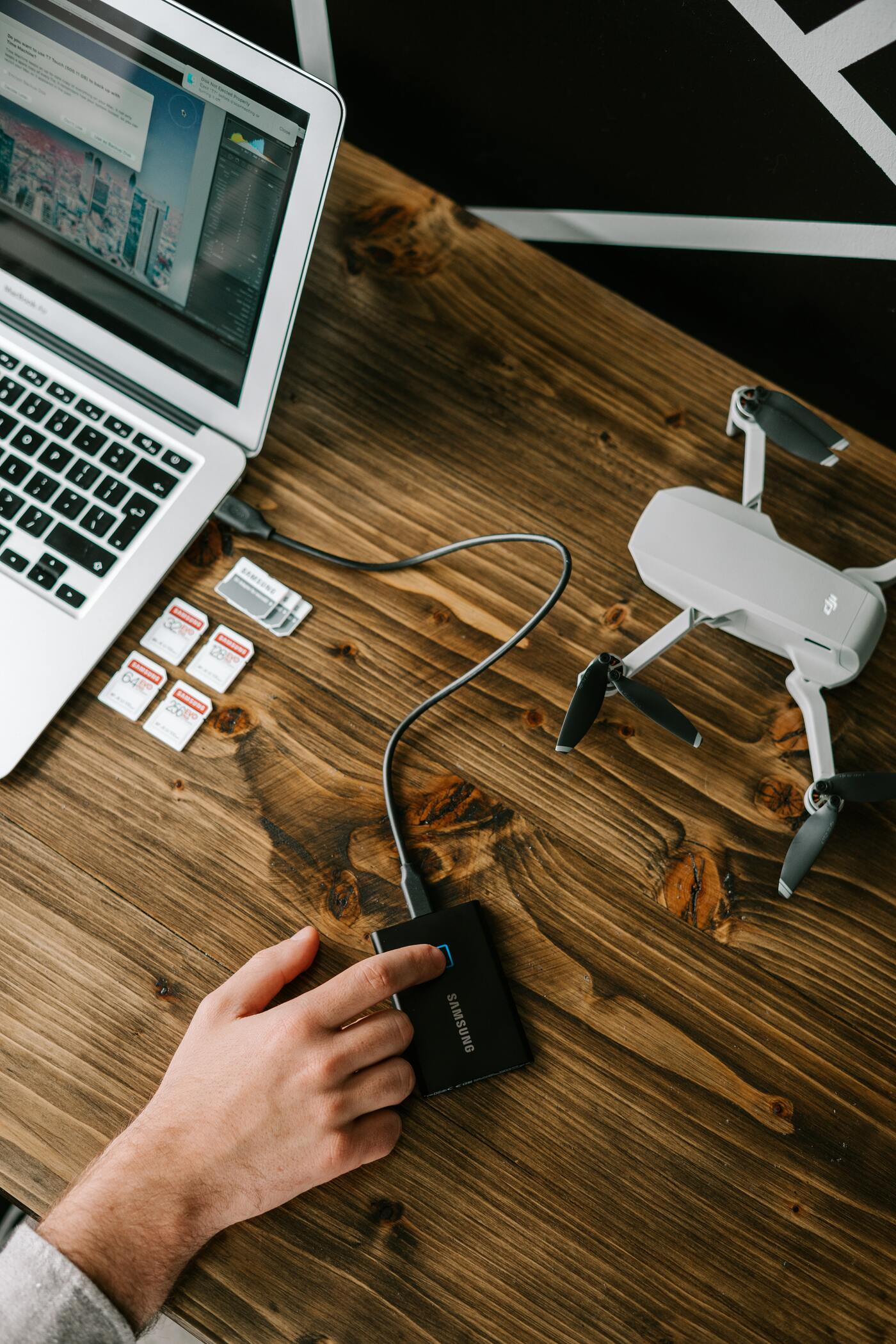
1. Design and Structure: Drones can have different designs, including quadcopters (with four rotors), hexacopters (with six rotors), octocopters (with eight rotors), fixed-wing drones (resembling airplanes), and more. The design depends on factors like flight stability, payload capacity, maneuverability, and range.
2. Purpose and Applications: Drones have numerous applications across various industries. They are commonly used for aerial photography and videography, surveillance and security, search and rescue missions, agricultural monitoring, infrastructure inspection, delivery services, scientific research, mapping and surveying, and recreational activities.
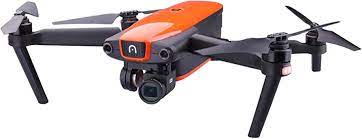
3. Flight Control: Drones can be manually controlled by a pilot using a remote controller or fly autonomously through GPS or onboard sensors. Many drones offer stabilization features such as altitude hold, GPS positioning, and obstacle avoidance to enhance flight stability and safety.
4. Camera Systems: Drones often come equipped with cameras or have the capability to carry payloads such as cameras. These cameras can capture high-resolution photos and videos from unique aerial perspectives. Advanced drones may have gimbals for stabilized camera footage.
5. Battery Life and Range: The flight time of a drone depends on its battery capacity and the weight it carries. Entry-level drones typically offer flight times ranging from 10 to 20 minutes, while professional-grade drones can stay airborne for over 30 minutes. The range of a drone refers to the distance it can travel from the pilot or its control station.

6. Regulations: Operating drones may be subject to regulations imposed by local aviation authorities. These regulations can include restrictions on flight altitudes, flight zones, registration requirements, and licensing for commercial operations. It's important to be aware of and comply with the regulations in your area.
It's worth noting that the term could refer to a specific brand, model, or concept that is not widely known or recognized.

How Much Does A Skyline Drone Cost ?
Since there isn't a specific brand or model that I can refer to, I cannot provide an exact cost. However, I can give you a general idea of drone pricing based on different categories and features.
Entry-Level Drones: Entry-level drones typically offer basic functionality and are suitable for beginners or recreational users. These drones often have shorter flight times, lower camera resolution, and limited range. Their prices can range from $50 to $300, depending on the brand and features.
Mid-Range Drones: Mid-range drones offer improved flight performance, longer battery life, better camera quality, and additional features such as obstacle avoidance and follow-me modes. These drones are suitable for enthusiasts and amateur photographers. Prices for mid-range drones usually range from $300 to $1000, depending on the specific model and features.
Professional Drones: Professional-grade drones are designed for commercial applications, aerial photography, videography, and industrial use cases. They typically have advanced features, higher payload capacities, longer flight times, and more robust build quality. Professional drones can range in price from $1000 to several thousand dollars, depending on the brand, capabilities, and camera equipment compatibility.
Custom-Built Drones: Some individuals or companies choose to build custom drones to meet their specific needs. Custom-built drones offer flexibility in terms of specifications, features, and payload capacity. The cost of a custom-built drone varies greatly depending on the components used, such as the flight controller, motors, frame, camera, and other accessories. It's difficult to provide a specific price range for custom-built drones as they can range from a few hundred dollars to several thousand dollars or more.
It's important to note that the prices mentioned above are approximate and can vary based on factors like the brand, model, features, and additional accessories included with the drone. It's recommended to research specific drone models from reputable manufacturers to get accurate and up-to-date pricing information.

What Is Headless Mode ?
Headless mode, also known as "care-free mode" or "head-free mode," is a flight mode available on many consumer drones. When activated, headless mode alters the drone's control scheme, making it easier for beginners or inexperienced pilots to fly the drone without worrying about its orientation or which direction it is facing.
In a typical flight mode, the drone's movement is relative to its front end or "head." For example, pushing the control stick forward will make the drone move forward relative to its front end. However, in headless mode, the drone's movement is based on the direction it was initially pointed or the direction the pilot considers as "forward," regardless of its actual orientation.
Here's how headless mode works in more detail:
1. Orientation Calibration: Before activating headless mode, the drone needs to be calibrated to establish the initial reference point for "forward." This is usually done by placing the drone on a flat surface and ensuring it is level and pointing away from you. The drone's internal sensors use this orientation as the reference.

2. Simplified Control: Once headless mode is enabled, the drone responds to control inputs relative to the initial reference point established during calibration. Pushing the control stick forward will make the drone move away from the pilot, regardless of its current orientation.
3. Simplified Rotation: In headless mode, the drone's rotation is also simplified. If the pilot wants to turn the drone to the right, for example, regardless of the drone's actual orientation, the control input will make the drone rotate to the pilot's right side.

Headless mode can be beneficial for beginners who are still learning to control the drone's movement and find it challenging to determine the drone's orientation during flight. It helps prevent confusion and makes it easier to maneuver the drone without constantly worrying about its front end or which direction it's facing.
It's important to note that headless mode does have some limitations. It may not work accurately in situations where the drone experiences strong wind gusts or if the initial orientation reference is lost or altered during flight.
Additionally, using headless mode extensively might hinder a pilot's ability to develop a natural understanding of drone orientation, which is crucial for more advanced maneuvers and flight control.
It's recommended to thoroughly read the user manual of your specific drone model to understand how to activate and use headless mode, as the process may vary depending on the drone's manufacturer and design.
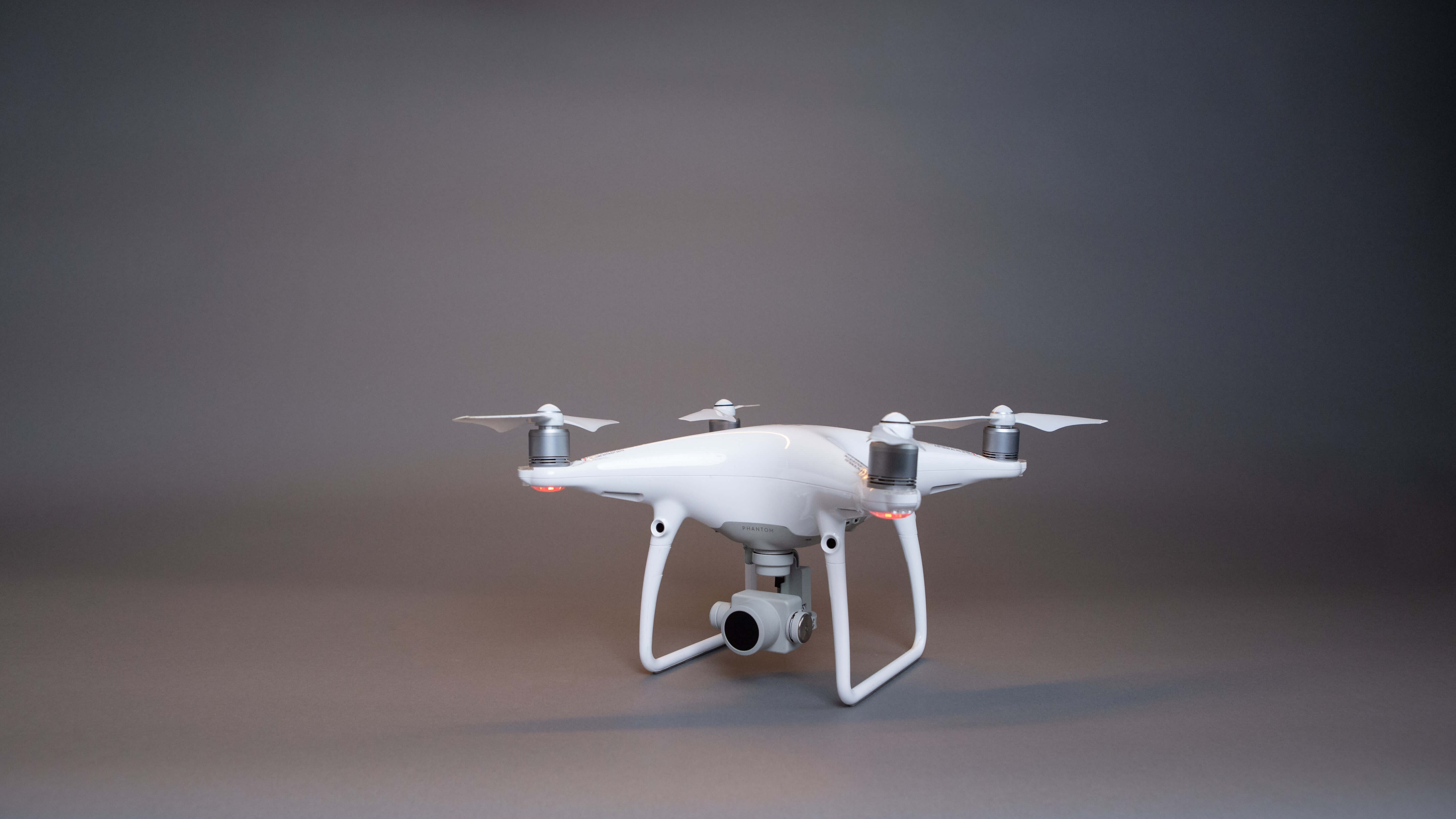
What Is The Most Expensive Civilian Drone ?
The most expensive civilian drones are typically found in the professional or industrial-grade category and are designed for specialized applications. While prices can vary based on specific configurations and customizations, one example of an expensive civilian drone is the DJI Matrice 600 (M600).
The DJI Matrice 600 is a hexacopter drone specifically designed for professional aerial photography and cinematography, industrial inspections, and other commercial applications. Here are some features and specifications of the DJI Matrice 600:
1. Payload Capacity: The Matrice 600 has a high payload capacity, allowing it to carry heavy cameras and other equipment. It can support a range of professional-grade cameras, including the RED Epic and the Zenmuse X5R.

2. Modular Design: The drone's modular design enables users to easily mount and switch between different cameras and payloads, making it versatile for various applications.
3. Flight Time: With a powerful battery system, the Matrice 600 can stay airborne for up to 36 minutes, depending on the payload weight and flight conditions.

4. Intelligent Flight Modes: The drone offers advanced flight modes, including waypoint navigation, point of interest (POI) tracking, and follow me mode, enhancing its capabilities for complex aerial operations.
5. Redundancy and Safety Features: The Matrice 600 includes redundant systems to enhance flight safety and reliability. It has a dual battery system, dual IMUs (inertial measurement units), and multiple flight control systems for increased redundancy.
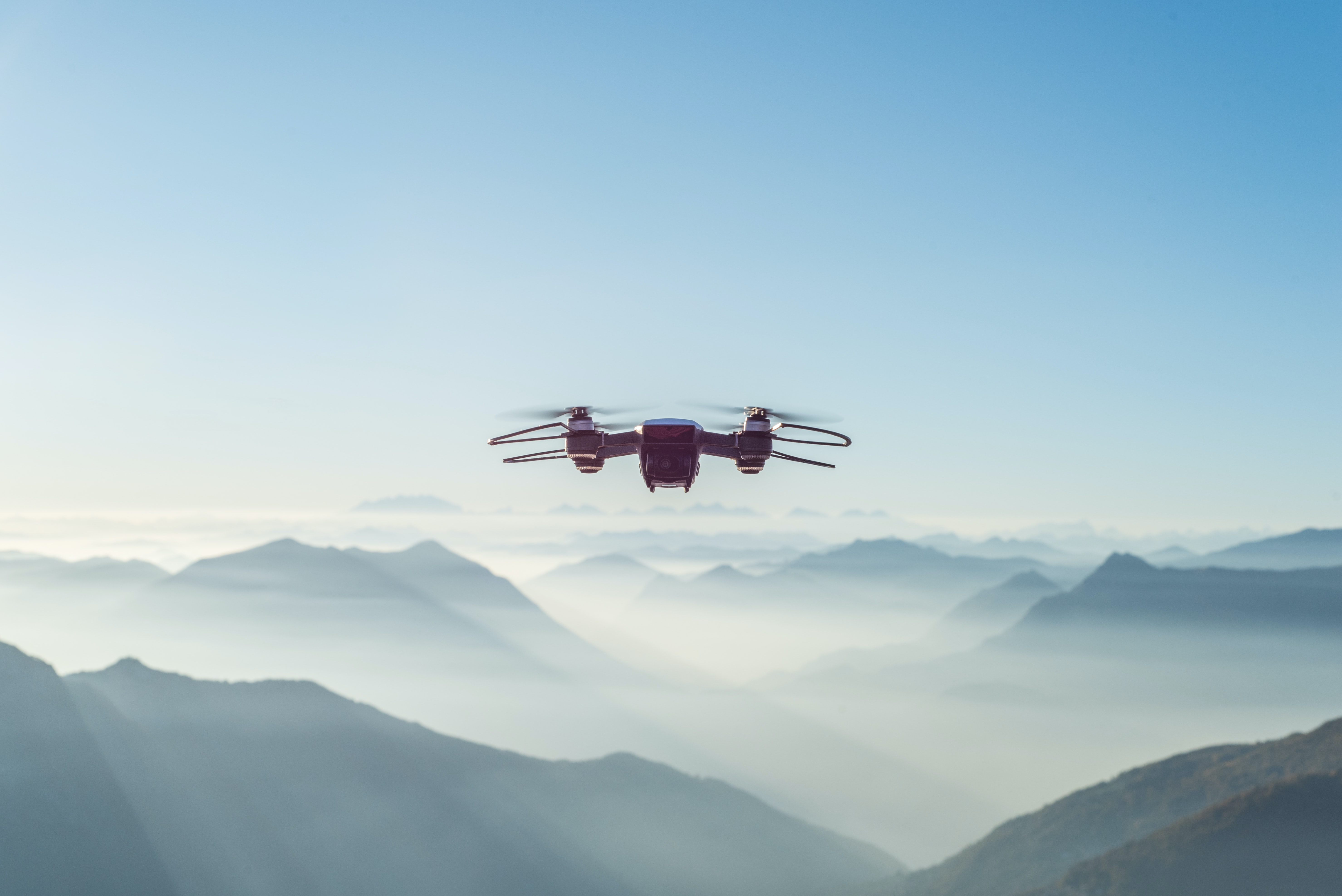
The price of the DJI Matrice 600 can range from $4,500 to $6,000 for the drone alone, excluding additional accessories and payloads. When you consider the cost of compatible cameras, gimbals, and other accessories required for specific applications, the total investment can be significantly higher.
It's important to note that the drone market is continuously evolving, and new models with advanced features are regularly introduced. Therefore, the most expensive civilian drone may vary over time as new technologies and products emerge. It's always a good idea to research current offerings from reputable manufacturers and consult with industry professionals to determine the most suitable drone for your specific needs.
Is It Easier To Fly In Headless Mode ?
Flying in headless mode can be perceived as easier for beginners or inexperienced pilots, as it removes the need to constantly keep track of the drone's orientation. However, it's important to understand that headless mode comes with its own set of considerations and limitations. Here's a detailed explanation:
Advantages of Flying in Headless Mode:

1. Simplified Control: In headless mode, the control inputs are based on the initial reference point established during calibration, rather than the drone's actual orientation. This can simplify control for beginners, as they can focus on the desired movement of the drone without worrying about its front end.
2. Reduced Orientation Confusion: When flying in headless mode, pilots don't have to constantly adjust their control inputs based on the drone's orientation. This can help prevent confusion, especially when the drone is far away or facing away from the pilot.

3. Intuitive Movement: Headless mode allows pilots to control the drone in a more intuitive manner. Pushing the control stick forward will make the drone move away from the pilot, regardless of its current orientation, similar to the controls used in video games or driving a remote-controlled car.
Limitations and Considerations of Headless Mode:
1. Loss of Orientation Awareness: Relying heavily on headless mode can hinder a pilot's ability to develop a natural understanding of the drone's orientation. This can make it more challenging to transition to other flight modes or perform more advanced maneuvers that require precise control based on the drone's orientation.
2. Wind Gusts and Environmental Factors: Headless mode may not accurately compensate for external factors like wind gusts, as it relies on the initial calibration reference. Strong winds can affect the drone's flight path and orientation, potentially leading to unintended movements or difficulty in controlling the drone.

3. Complex Flight Paths: When flying in headless mode, the drone's movements are simplified and relative to the initial reference point. This can limit the ability to execute complex flight paths or precise maneuvers that require intricate control based on the drone's orientation.
4. Reduced Situational Awareness: When flying in headless mode, pilots may become overly reliant on the simplified control scheme. This can result in reduced situational awareness, as they may not pay as much attention to the drone's surroundings or potential obstacles.

It's important to note that while headless mode can make flying easier for beginners, it is still crucial to gradually develop skills and practice flying in different flight modes. Becoming proficient in manual control and understanding the drone's orientation will provide better overall control and situational awareness in the long run.
It's recommended to consult the user manual of your specific drone model for instructions on how to activate and use headless mode, as the process may vary depending on the manufacturer and model.
Why Is Headless Faster ?
Headless mode does not make the drone faster in terms of its physical speed or maximum velocity. The speed of a drone in headless mode is the same as its speed in any other flight mode. The perception of increased speed in headless mode may stem from a couple of factors:
1. Simplified Control Inputs: In headless mode, the control inputs are based on the initial reference point established during calibration, regardless of the drone's actual orientation. This means that pushing the control stick forward will always make the drone move away from the pilot, regardless of the drone's facing direction.

The perception of increased speed may arise because the pilot no longer needs to constantly adjust their control inputs based on the drone's orientation. The control inputs become more intuitive, similar to controlling a remote-controlled car or video game character. This simplification can make it feel like the drone is responding faster or more directly to the pilot's commands.
2. Reduced Mental Load: Flying a drone in non-headless mode requires the pilot to constantly consider the drone's orientation and adjust their control inputs accordingly. This can create additional mental load and cognitive processing, especially for beginners or inexperienced pilots.

In headless mode, the pilot is freed from the need to mentally track the drone's orientation and make continuous adjustments. This reduction in mental load can create a perception of increased speed since the pilot can focus more on the drone's movement and its response to control inputs.
It's important to note that the physical speed of the drone remains the same regardless of the flight mode. The perception of increased speed in headless mode is subjective and is influenced by the simplified control inputs and reduced cognitive load, which can make the flying experience feel faster and more responsive.
Are Holy Stone Drones Good ?
Holy Stone is a popular brand in the consumer drone market, known for producing a range of affordable drones with various features and capabilities. Overall, Holy Stone drones are well-regarded within their price range, and they offer a decent balance between price, quality, and functionality. However, it's important to consider several factors when assessing whether Holy Stone drones are a good fit for your specific needs.

1. Price: Holy Stone drones are generally more affordable compared to higher-end professional-grade drones. They offer an accessible entry point for beginners or recreational users who are looking for a drone for casual flying or basic aerial photography. If you have a limited budget or are just starting out, Holy Stone drones can provide good value for the price.
2. Flight Performance: Holy Stone drones typically offer stable flight performance, thanks to features like altitude hold, headless mode, and one-key takeoff/landing. These features make it easier for beginners to control the drone and achieve stable flight. However, they may lack some of the advanced flight capabilities found in more expensive drones, such as obstacle avoidance or advanced GPS positioning.

3. Camera Quality: Holy Stone drones come with integrated cameras or offer camera compatibility as an option. The camera quality on Holy Stone drones varies depending on the model, but they generally provide decent image and video quality for casual use and basic aerial photography. However, if you require high-resolution or professional-grade photography, you may need to consider more advanced and expensive drone models.
4. Durability and Build Quality: Holy Stone drones are generally well-built and durable, designed to withstand moderate crashes and rough handling. However, they may not have the same level of ruggedness and durability as higher-end drones designed for professional or industrial use. It's important to handle the drone with care and be mindful of its limitations.

5. Customer Support and Community: Holy Stone has a good reputation for customer support, offering assistance and guidance to customers who have questions or issues with their products. Additionally, Holy Stone has an active user community where you can find resources, tutorials, and discussions related to their drones.
In summary, Holy Stone drones are considered a good option for beginners, recreational users, and those on a budget. They provide a decent balance of features, flight performance, and camera quality at an affordable price point.
However, if you require advanced features or professional-grade capabilities, you may need to consider higher-end drone models from other brands. It's always recommended to read reviews, compare specifications, and assess your specific needs before making a purchase decision.

How To Legally Make Money With A Drone ?
Making money with a drone can be an exciting venture, but it's important to understand and comply with the legal and regulatory requirements in your country or region. The regulations regarding commercial drone operations can vary, so it's crucial to research and follow the guidelines specific to your location. Here are some general steps to legally make money with a drone:
1. Understand the Regulations: Familiarize yourself with the drone regulations in your country or region. Look for guidelines provided by the local aviation authority or civil aviation agency. These regulations typically cover aspects such as registration, pilot certification, flight restrictions, and operational limitations for commercial drone use.
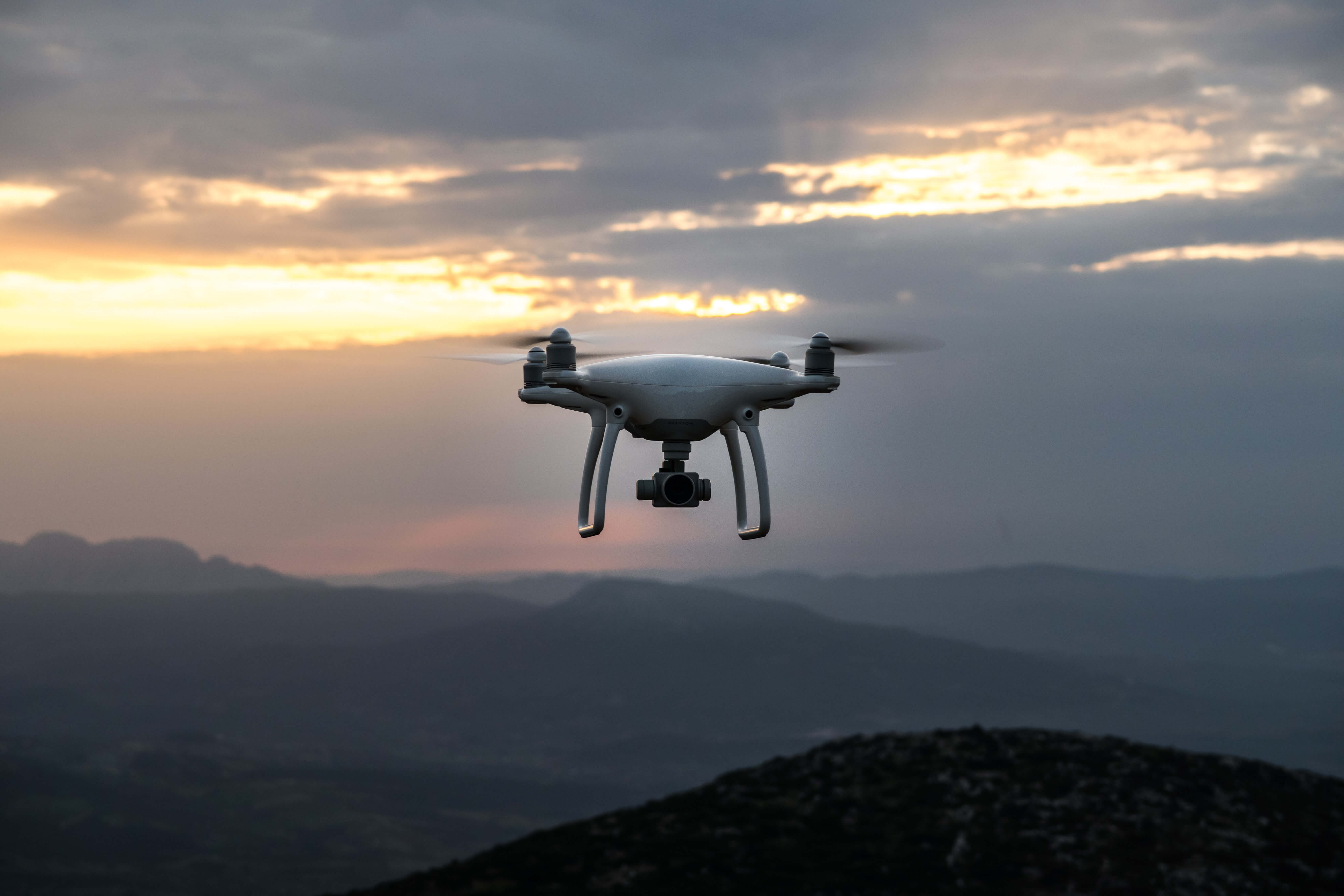
2. Obtain Necessary Certifications or Licenses: Depending on the regulations in your area, you may need to obtain specific certifications or licenses to operate a drone commercially. This could involve completing a training course or passing an exam to become a certified drone pilot. Check with the appropriate authorities or organizations to determine the requirements and procedures to obtain the necessary certifications.
3. Register Your Drone: Some countries require drone operators to register their drones, especially for commercial use. Make sure to register your drone as per the guidelines provided by the local aviation authority. This process may involve providing information about the drone, including its model, serial number, and other details.

4. Identify Suitable Services or Applications: Consider the various industries or sectors that can benefit from drone services. This could include aerial photography and videography, real estate, construction, agriculture, surveying, mapping, inspection services, and more. Identify the specific services you can offer based on your skills, equipment, and local market demands.
5. Insurance: Evaluate the need for insurance coverage for your commercial drone operations. Insurance can provide liability protection in case of accidents, property damage, or injury. Consult with insurance providers who specialize in drone coverage to understand the options available to you.
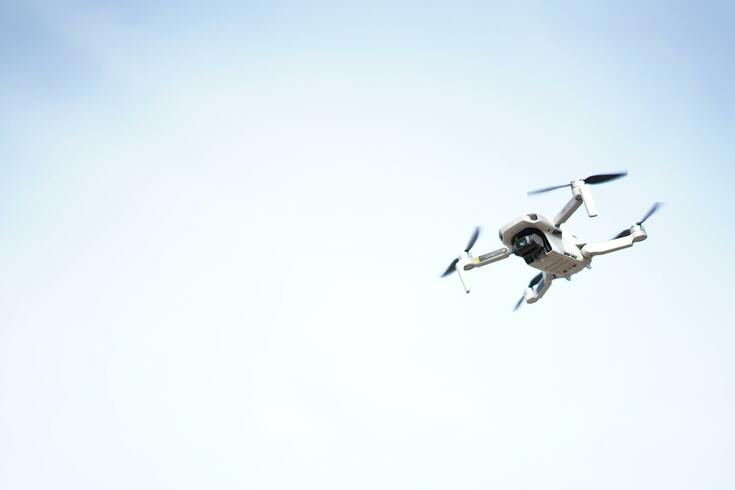
6. Marketing and Networking: Develop a marketing strategy to promote your drone services. Create a professional portfolio showcasing your work and capabilities. Network with potential clients, industry professionals, and local businesses to build connections and partnerships.
7. Pricing and Contracts: Determine your pricing structure based on factors such as the complexity of the project, your experience, the time involved, and the market rates in your area. Draft contracts or service agreements to outline the scope of work, deliverables, payment terms, and other relevant terms and conditions. It's advisable to consult with legal professionals to ensure your contracts are legally sound and protect your interests.

8. Compliance and Safety: Adhere to safety protocols and best practices for drone operations. Follow the regulations regarding flight restrictions, airspace rules, and privacy considerations. Conduct pre-flight checks, maintain your equipment properly, and prioritize safety in all aspects of your commercial drone operations.
Remember that the steps outlined above are general guidelines, and it's essential to research and adhere to the specific legal requirements and regulations in your area. Laws and regulations related to drones are subject to change, so it's important to stay informed and updated on any new developments or amendments.

Why Do Cheap Drones Fly Away ?
Cheap drones may sometimes experience issues that can cause them to fly away or become uncontrollable. Here are some reasons why this could occur:
1. Lack of GPS or Positioning Systems: Low-cost drones often lack GPS or advanced positioning systems. Without these features, the drone may struggle to maintain a stable position or hold its location accurately, making it more susceptible to drifting away or losing control.
2. Weak or Unreliable Signal: Cheap drones may use lower-quality or less robust communication systems, such as Wi-Fi or radio frequencies. These signals can be easily interfered with, resulting in loss of control or communication between the drone and the remote controller.

3. Limited Range and Signal Strength: Inexpensive drones typically have shorter operating ranges compared to higher-end models. If the drone goes beyond its effective range or experiences signal interference, it may lose contact with the remote controller and fly away.
4. Inadequate Battery Life: Cheap drones often come with lower-capacity batteries, resulting in shorter flight times. If the battery life is insufficiently managed or if the drone lacks low battery warnings or failsafe features, it can unexpectedly lose power mid-flight and drift away or crash.

5. Fragile Construction and Components: Low-cost drones may have less durable construction, using lightweight materials that are more prone to damage. This can lead to malfunctions or failures in critical components, such as the motors or control systems, causing the drone to become uncontrollable.
6. Lack of Flight Stabilization Features: Cheap drones often lack advanced flight stabilization features, such as altitude hold or gyroscopic stabilization. Without these capabilities, the drone may be more susceptible to external factors like wind, resulting in unstable flight and potential loss of control.

7. User Error or Inexperience: Inexperienced or untrained pilots may encounter difficulties flying drones, regardless of their cost. Operating a drone without sufficient knowledge of flight controls, environmental conditions, or safety precautions can lead to unintended flight paths, crashes, or loss of control.
It's important to note that not all cheap drones will experience these issues, and many affordable drone models offer reliable and stable flight performance when operated correctly. However, the risk of encountering these problems may be higher with low-cost options due to the potential compromises in their design, build quality, and features.
To mitigate the risks of a cheap drone flying away, it is recommended to thoroughly read the user manual, practice in open and safe areas, avoid flying in adverse weather conditions, maintain a strong and clear line of sight with the drone, and ensure that the drone is in good working condition before each flight.
How Long Do Cheap Drones Last ?
The lifespan of a cheap drone can vary depending on various factors such as build quality, usage, maintenance, and the specific model or brand. While it's difficult to provide an exact timeframe, here is a list of factors that can affect the longevity of cheap drones:
1. Build Quality: Cheap drones often use less expensive materials and components, which may result in reduced durability and longevity. They may be more prone to wear and tear, and certain parts may break or malfunction more easily.
2. Flight Hours: The total flight hours or flight time accumulated by a drone can impact its lifespan. Continuous and frequent usage can put stress on the motors, batteries, and other components, potentially shortening the drone's lifespan.
3. Maintenance and Care: Proper maintenance and care can significantly extend the lifespan of a drone, regardless of its cost. Regularly cleaning the drone, inspecting and tightening components, and following the manufacturer's guidelines for battery care can help preserve its longevity.
4. Quality of Components: Cheap drones may have components, such as motors, propellers, and batteries, that are more prone to failure or degradation over time. Lower-quality components can impact the overall lifespan of the drone.
5. Upgradability: Some cheap drones may have limited upgradability or lack compatibility with newer technologies or features. As drone technology advances, cheap drones may become outdated faster, affecting their usefulness and lifespan.
6. Flight Conditions: Flying a drone in adverse weather conditions or in rough environments can increase the risk of damage or component failure. Excessive exposure to moisture, extreme temperatures, or high winds can negatively impact the drone's lifespan.
7. User Handling: User handling and piloting skills also play a role in the lifespan of a cheap drone. Inexperienced pilots who crash the drone frequently or mishandle it may cause damage that shortens its lifespan.
It's important to note that even cheap drones from reputable brands can provide reliable performance and durability. The lifespan of a drone is highly dependent on how it is used, maintained, and handled by the user. Taking proper care, following safety guidelines, and performing routine maintenance can help maximize the lifespan of a cheap drone.
What Does Headless Mode Mean For A Drone ?
Headless mode is a flight mode available on many consumer drones. It alters the control scheme of the drone, making it easier for beginners or inexperienced pilots to fly the drone without worrying about its orientation or which direction it is facing. Here's a list of key points about headless mode:
1. Simplified Control: In headless mode, the drone's control inputs are based on the pilot's perspective rather than the drone's orientation. Pushing the control stick forward will make the drone move away from the pilot, regardless of its facing direction.
2. Orientation Calibration: Before activating headless mode, the drone needs to be calibrated to establish the initial reference point for "forward." This is typically done by placing the drone on a level surface and ensuring it is pointing away from the pilot.
3. Intuitive Movement: Headless mode enables more intuitive control of the drone. The control inputs become similar to controlling a remote-controlled car or video game character, where forward always means moving away from the pilot.
4. Reduced Orientation Confusion: Headless mode eliminates the need for pilots to constantly adjust their control inputs based on the drone's orientation. This helps prevent confusion, especially when the drone is far away or facing away from the pilot.
5. Simplicity for Beginners: Headless mode simplifies the flight controls, making it easier for beginners to learn and get started with flying drones. It reduces the cognitive load associated with understanding and managing the drone's orientation during flight.
6. Limitations: While headless mode can be helpful for beginners, it has limitations. It may not accurately compensate for external factors like wind gusts, and the drone's movement can become less predictable or less responsive in certain situations. Relying solely on headless mode may hinder the development of natural orientation skills needed for advanced flying.
7. Training Aid: Headless mode can serve as a training aid for beginners to gain initial flight experience and confidence before transitioning to manual control or other flight modes.
8. Not Suitable for Advanced Maneuvers: Headless mode simplifies control but limits the ability to execute complex flight paths or advanced maneuvers that require precise control based on the drone's orientation.
It's important to note that headless mode is a feature commonly found on consumer-grade drones. Different drone models may have variations in how headless mode is activated or implemented, so it's advisable to refer to the specific drone's user manual for detailed instructions.
For more information you can click here Aerial Photography